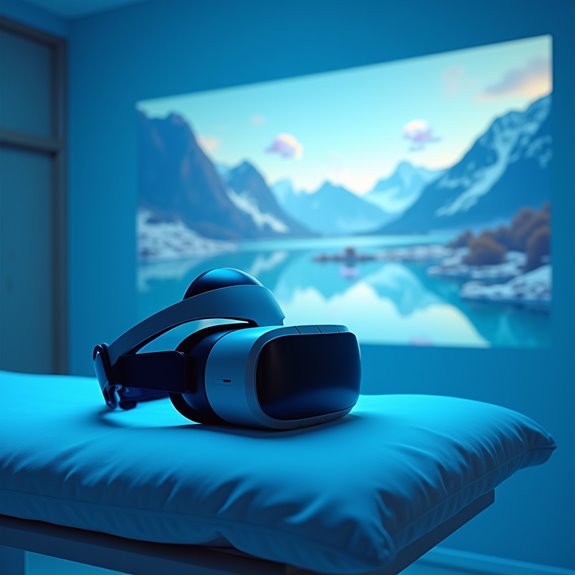Virtual reality is emerging as a game-changing tool for chronic pain management, offering an engaging alternative to traditional medications. Studies show VR can reduce pain by up to 33% – matching morphine's effectiveness – by cleverly distracting the brain's pain processors. The technology lets patients escape into calming virtual environments or interactive experiences, all from the comfort of home. With FDA approvals and promising clinical trials, VR's potential for transforming pain therapy is just beginning to unfold.

While chronic pain sufferers have long relied on traditional medications and therapies, a surprising new ally has emerged from the world of gaming and entertainment – virtual reality. What started as a tool for immersive gaming experiences is now showing remarkable promise in helping people manage persistent pain conditions, offering a drug-free alternative that's both engaging and effective.
The science behind VR's pain-relieving properties is fascinating. When someone dons a VR headset, they're not just escaping into a digital world – they're actually hijacking their brain's pain-processing centers. The study found that VR provided pain reduction of 33%, comparable to the effects of morphine. Think of it as a high-tech version of the old "distract yourself from a paper cut by thinking about puppies" trick, except this time, the distraction is so powerful it can help with serious chronic pain conditions. A recent study at Cedars-Sinai Medical Center demonstrated VR's effectiveness through a rigorous trial with 120 hospitalized patients.
VR doesn't just distract from pain – it rewires how our brains process it, turning virtual worlds into powerful pain-fighting tools.
Recent clinical trials have been turning heads in the medical community, with many patients reporting significant drops in their pain levels during VR sessions. The FDA has even given their stamp of approval to certain VR devices specifically designed for treating chronic low back pain, which is kind of like getting a gold star from the strictest teacher in school. These devices combine the immersive power of VR with proven therapeutic techniques like mindfulness and cognitive behavioral therapy. The technology has shown particular promise in physical therapy sessions, making rehabilitation exercises more engaging for patients.
What makes VR particularly exciting is its versatility and accessibility. Unlike traditional pain medications that come with a one-size-fits-all approach, VR experiences can be tailored to individual preferences and needs. Some patients might find relief in serene meditation environments, while others might prefer more interactive experiences that keep their minds thoroughly engaged.
And as VR technology becomes more affordable and user-friendly, more people can access these treatments from the comfort of their homes.
The future of VR in pain management looks promising, though researchers are still exploring its long-term effects. While it might not be a complete replacement for traditional pain management methods, it's proving to be a valuable addition to the pain-fighting toolbox, offering hope to those seeking alternatives to conventional treatments.
Frequently Asked Questions
How Much Does VR Pain Treatment Typically Cost Compared to Traditional Methods?
VR pain treatment costs typically start at $300 for basic devices, while traditional methods vary greatly. Though VR lacks insurance coverage, it may offer long-term savings versus ongoing medications and therapy.
Are There Any Age Restrictions for Using VR in Chronic Pain Management?
While no strict age limits exist, VR pain management requires assessment of individual factors like cognitive ability, physical health, and balance issues, particularly for older adults and young children.
Can VR Therapy Be Combined With Existing Pain Medications?
VR therapy can be safely combined with existing pain medications, potentially enhancing overall pain relief through complementary mechanisms. Research indicates this combination may reduce medication dependence while improving treatment effectiveness.
What Percentage of Patients Report Significant Improvement Using VR for Pain Relief?
Studies indicate that 46% of patients using VR devices reported more than a 50% reduction in pain levels after eight weeks, compared to 26% in the control group.
How Long Does Each VR Therapy Session Last for Chronic Pain Treatment?
VR therapy sessions for chronic pain typically range from 10 to 30 minutes per session. These can be conducted multiple times daily or as needed when breakthrough pain occurs.



Leave a Reply